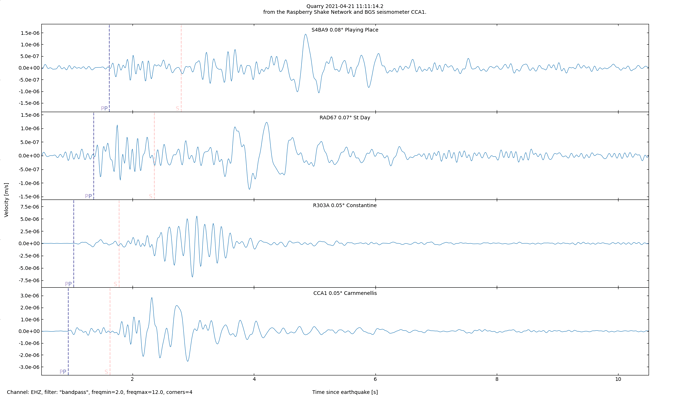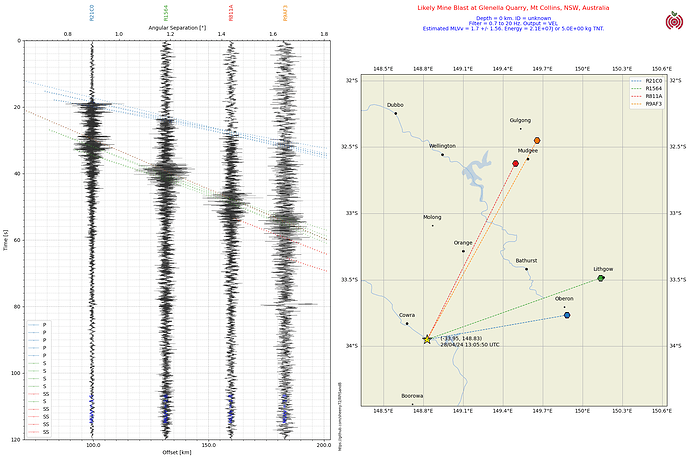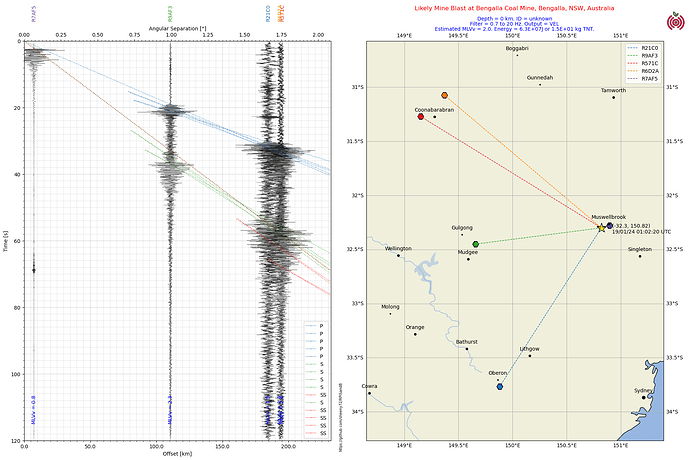Hello @RHP.
Sorry for the late reply, I am just back from 3 months traveling around Australia.
I regularly monitor mine blasts within 200-300 kms of my station using multiple Raspberry Shakes on the network to try to identify where and when the blast was, etc simply as a hobby and a challenge. Occasionally I get to find an earthquake instead which has been dismissed by the authorities as a mine blast, but of course if the location doesn’t coincide with a mine site then its not likely a blast. ;o)
To check whether the blasts are compliant, you first need to get a copy of the the mine/quarry’s environment consent conditions. The consent conditions will determine how easily (or not) you can check for compliance.
For example, I consulted with some people doing exactly this, and the compliance conditions they were dealing with was a maximum ground movement at any neighbouring residence of less than x m/s, and a maximum blast pressure at any neighbouring residence of less than y Pa.
This is the simplest scenario for citizen checking. If you are very close to the site, you would probably need an RS3D or an RS4D to measure the ground movement as sometimes the horizontal ground movement will be larger than the vertical. It is unlikely that you can get away with an RS1D if you are close enough to be concerned about the blast, as it will miss all the horizontal ground movement.
If you need to monitor the air blast as well, then an RS&B is required to measure the atmospheric blast in Pa.
If the consent conditions are different, or in different units, then it is not so straight forward, but there are examples of python code that can be used to calculate the ground motion in either displacement (m), velocity (m/s) or acceleration (m/s/s) regardless of what units the Shake measures it in. Likewise python code can be used to convert the infrasound signal from an RS&B to decibels if required.
If the consent conditions don’t specify a limit at a residence, then things can be more difficult again to be able to capture meaningful data.
As Brandon said, if you want to present this data in a legal situation, that’s a whole other ball game, but if you want to satisfy yourself of compliance and when its appropriate to complain, then a Raspberry Shake is the way to go.
Just as an aside, non-compliant blasts are rarely deliberate IMO. From talking to a local quarry owner, he said his biggest fear is a void in the rock. When they set a blast, they drill to a depth and fill the hole to a level with explosive. If they drill through a void in the rock, the explosive fills the void as well the hole, and this creates a much bigger explosion. It’s both non desirable and non-compliant, but they have their own monitoring to check for compliance and have to report the results to EPA (at least in Australia).
Al.


